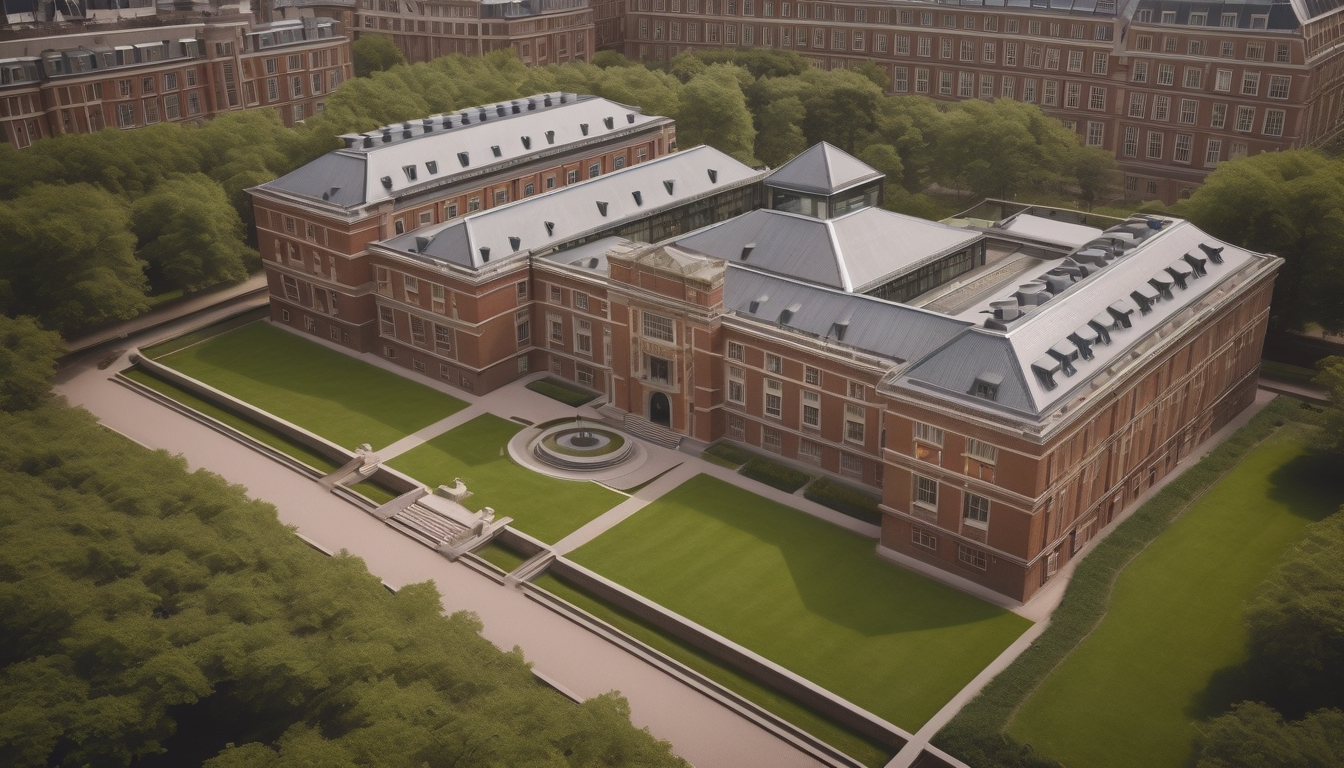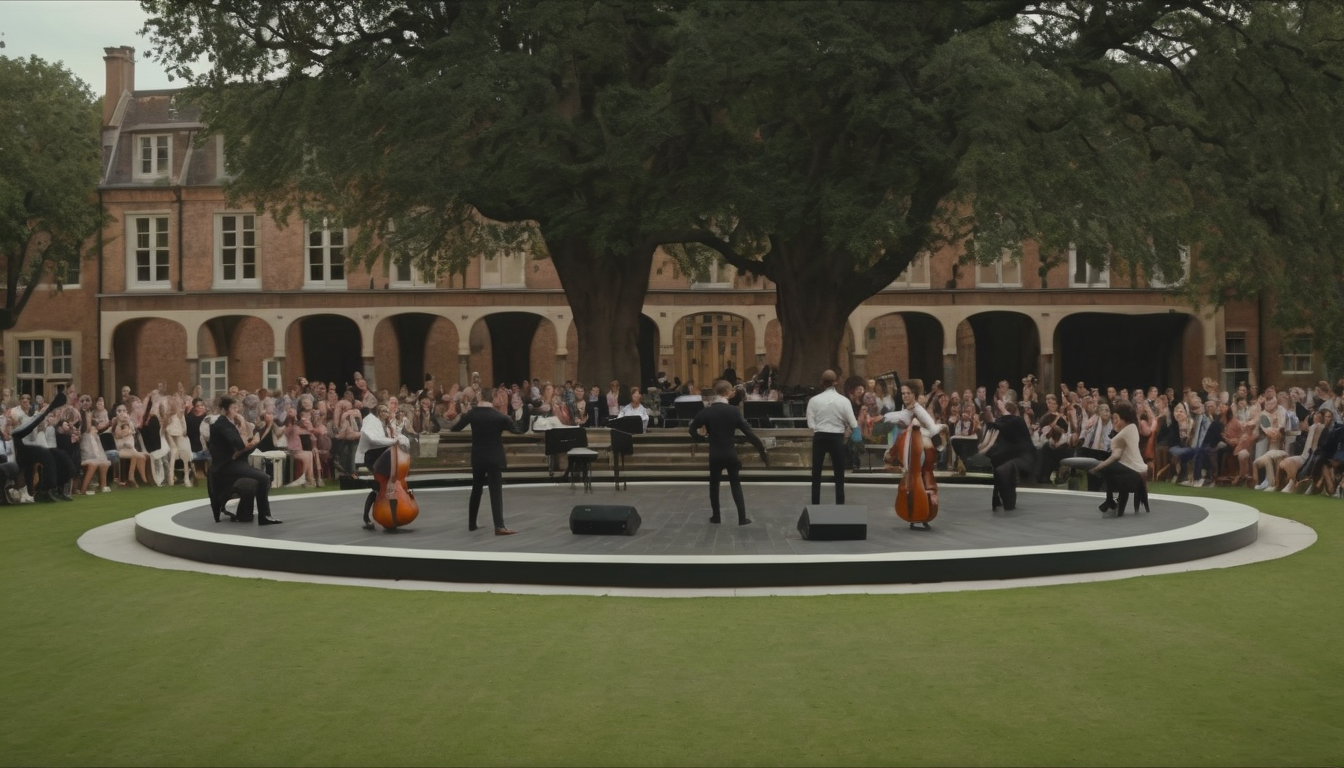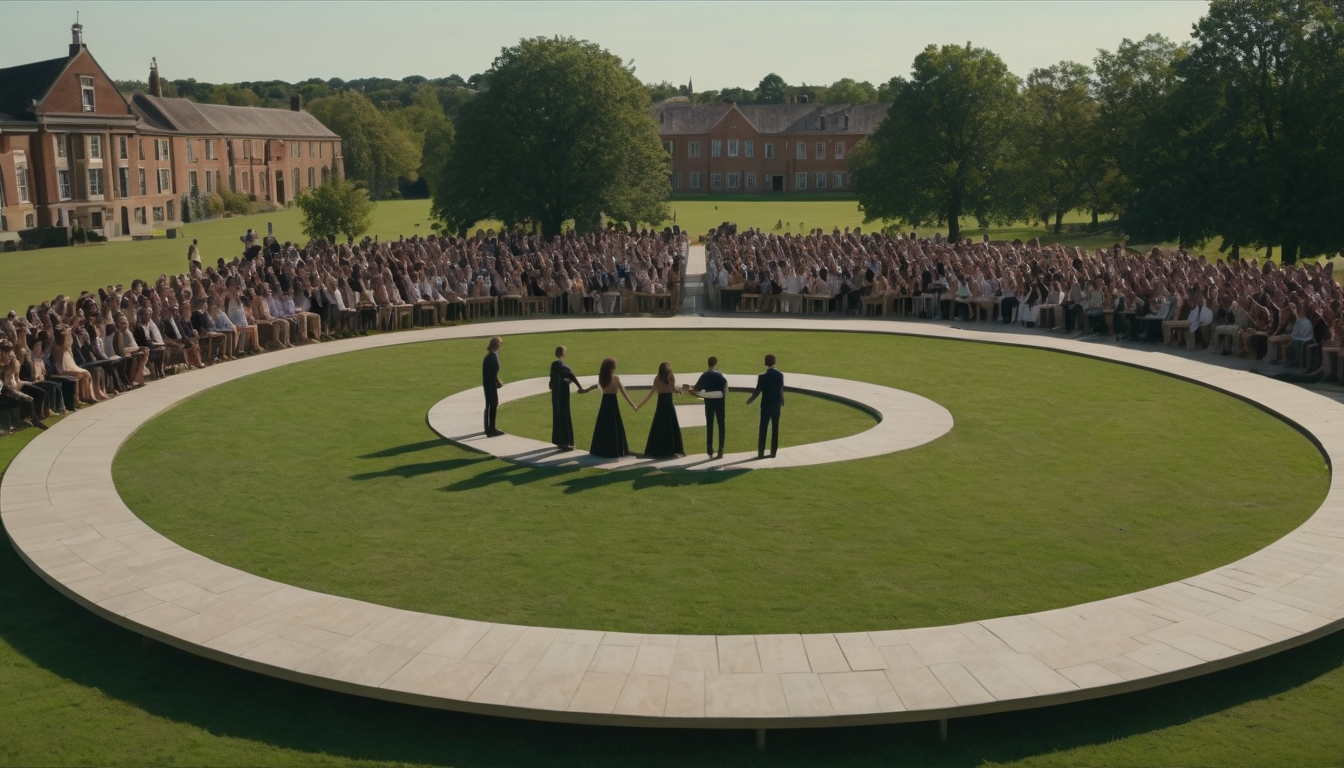Shekland university is the national university for the nation of Shekland found in it’s capital city of Shekland. It is one of the oldest remaining Universities, and specializes in research for experience engineering, and propaganda. Being that Shekland is one of the largest Cities in the world it naturally became a center for culture. As such the university has a robust arts program. The campus is not one single location, there are 2 “campuses” that make up the university. The first is affectionately referred to as Shekland senior, and the second is Shekland miner.
Shekland Senior
The original campus of Shekland university, Shekland Senior is where most of the administration, and pure research groups operate from. In many cases people are “upgraded” to working here once they have attained tenure. Roughly only %15 of the staff will end up working in Shekland Senior.

Shekland Miner
Shekland miner is a double entendre of a name. It plays off the idea of senior and minor, and is spelt miner because of it’s founder. Decades after Shekland Senior was founded Sir Ethan Woods
 Upon striking one of the largest gold deposits on his family farm, Woods dedicated his life to furthering the arts. His mother wanted to be a painter, but was disallowed to enter any art schools due to changes to policy relating to financial stability being an acceptance criteria. Woods devoted time, and money towards “ensuring no one goes without creativity”. For his various efforts and programs he was granted an honorary knighthood of arts posthumously.
Upon striking one of the largest gold deposits on his family farm, Woods dedicated his life to furthering the arts. His mother wanted to be a painter, but was disallowed to enter any art schools due to changes to policy relating to financial stability being an acceptance criteria. Woods devoted time, and money towards “ensuring no one goes without creativity”. For his various efforts and programs he was granted an honorary knighthood of arts posthumously.
Shekland Circle & Reshuffle
The Shekland Circle is a required aspect of Shekland Miner. It is the heart of the campus and is famous for putting on plays, speeches, and being a collaborative space for innovation.
 A performance of the Shekland anthem performed by several members of the national orchestra
A performance of the Shekland anthem performed by several members of the national orchestra
As part of the deal when gifting Shekland miner to the broader university organization every 10 years there is a “reshuffling”. As part of this reshuffling it is required that either the entire campus, or part of it is redesigned.
 Performers taking a bow after a performance of the play del-atrok
Performers taking a bow after a performance of the play del-atrok
This redesign has a pre-allocated budget (pre-allocated to ~600 years or ~60 redesigns), and is at the discretion of the commissioner of arts to nominate someone to do the redesign. The only stipulations are that it must meet current operational needs, and it must have the Shekland circle in some form or another at the center.
 A dozen-speaker conference to discuss the Q riots
A dozen-speaker conference to discuss the Q riots
Throughout the various redesigns most of the elected architects have made small changes (a single building redesign, some extra plant life etc.). More ambitious redesigns are often met with harsh backlash from students and staff.
 Some previous rejected reshuffling’s
Some previous rejected reshuffling’s
This practice of reshuffling is highly controversial and has led to many critiques. As of yet there is still no mention of changing the tradition, though discussions between the commissioner’s of commerce, art and education are still ongoing.
Shekland Massacres
In the early days of Memoizer’s there were incredibly loose regulations. Broadly speaking anyone could use the devices for any reason. There weren’t limits on experience engineers or the memoizers themselves. After the massacre’s sweeping legislation was passed that has made it logistically impossible to use memoizers outside of experience theatres.
First Massacre
The first Shekland massacre was perpetrated by Alex Collins. Collins was a Mortuite, a follower of Mortuism which is a fictional religion found in the reapers coast series of experiences. Collins suffered from extreme dissociation. During a class in his experience engineering degree, he subjected 7 other group members to a psychological torture in an experience he crafted while on incredibly high dosage hallucinogens, and other psychotropic drugs.
Collins and his 7 co-conspirators stock piled weapons with the intent of carrying out several massacres. They entered the campus on the east wing at 9am, by 9:20 they had killed or maimed a majority of the victims (63 fatalities, 94 injured total). The other 7 co-conspirators were shot to death in various parts of the university. Alex was ultimately shot to death while confronting Dr. Mark Seaborne in his classroom. In the aftermath of the massacre the Shekland proposal was put forth, and accepted. This made it (nearly) logistically impossible to privately own a memoizer.
Second massacre
15 months after the first Shekland massacre Dr. Mark Seaborne would fire into a crowd during the winter convocation (26 fatalities, 19 injured total). Following an outburst while teaching a class, and accompanying mental breakdown after losing his daughter in the first massacre, Dr. Seaborne was fired. It is assumed based on logs available from his personal memoizer that Dr. Seaborne obtained a copy of the banned experience generated by Alex Collins that lead to the first massacre.
Through the logs it seems that shortly after Dr. Searborne forced his wife to go through the same experience, and then he killed her. The reason for this is unknown, but it is likely that she refused to go through with helping him plan and orchestrate the second massacre. In other media it is often portrayed that Dr. Seaborne succumbed to the same ideas as Alex, however statements from investigators suggest otherwise.
Due to the lack of study around how the drugs Alex took affect one’s brain, it’s likely that Dr. Seaborne instead had to high of an electrical current applied to a portion of his brain. Memoizers generally have guards in place to avoid certain problems, however those guards only exist based on measurements of healthy people, and in known high risk areas. Since this was a novel form of attack, none of the affected areas had safeguards. Because Dr. Seaborne had a research memoizer, there is much more data that was captured about mental states during the experience, and many researchers are now looking into whether the effects of certain drugs can be emulated using a memoizer, without having to take the compounds themselves.
Alumni & Staff
- Dr. Reinart Saelzar
- Consciousness Serialization
- Memoizer Safety
- Dr. Mark Seaborne
- Consciousness Serialization
- Cryptography
- Compression
- Memoizer Safety
- Dr. Melinda Carthwright
- Consciousness Serialization
- Memoizer Safety
- Memoizer Governance
- Dr. Carnell Kliever
- Governance structures
- Legislation